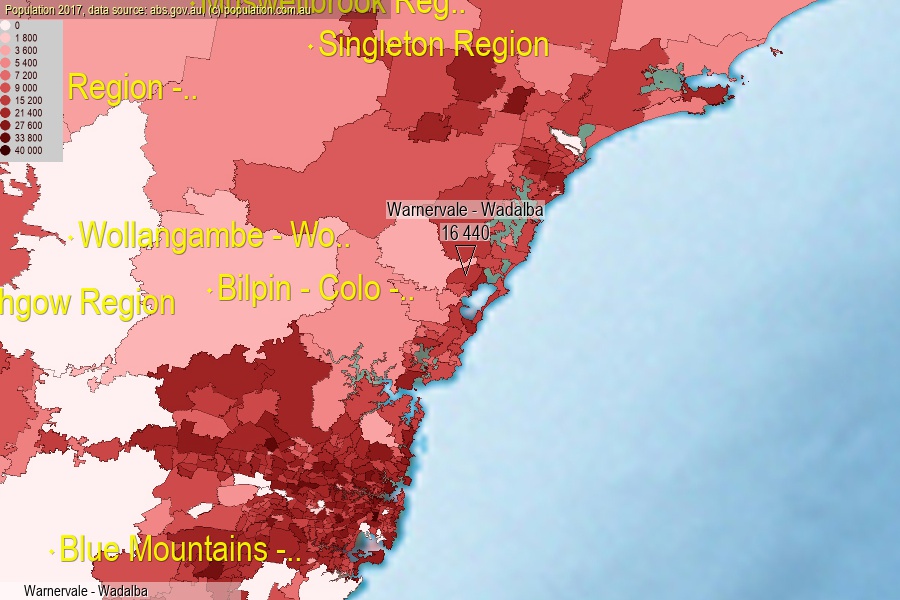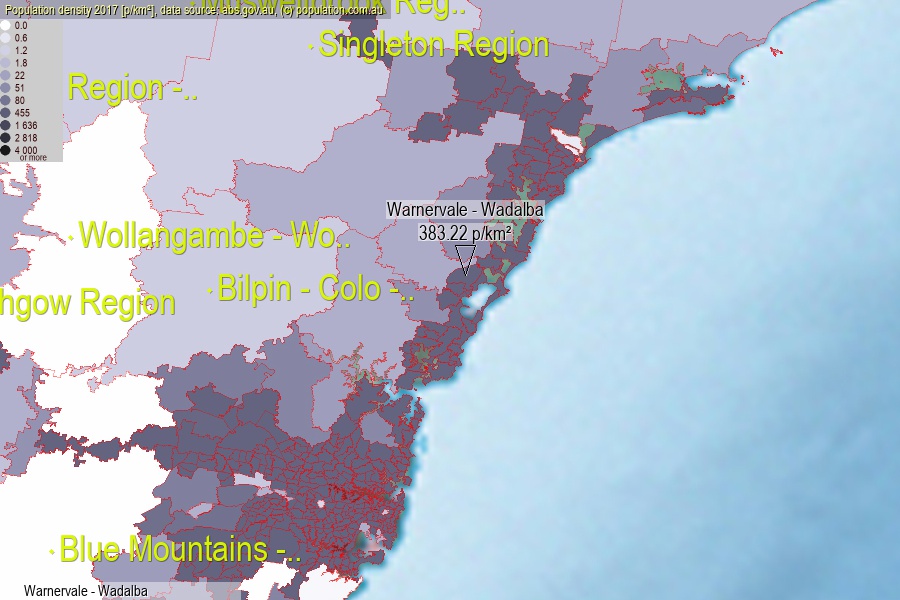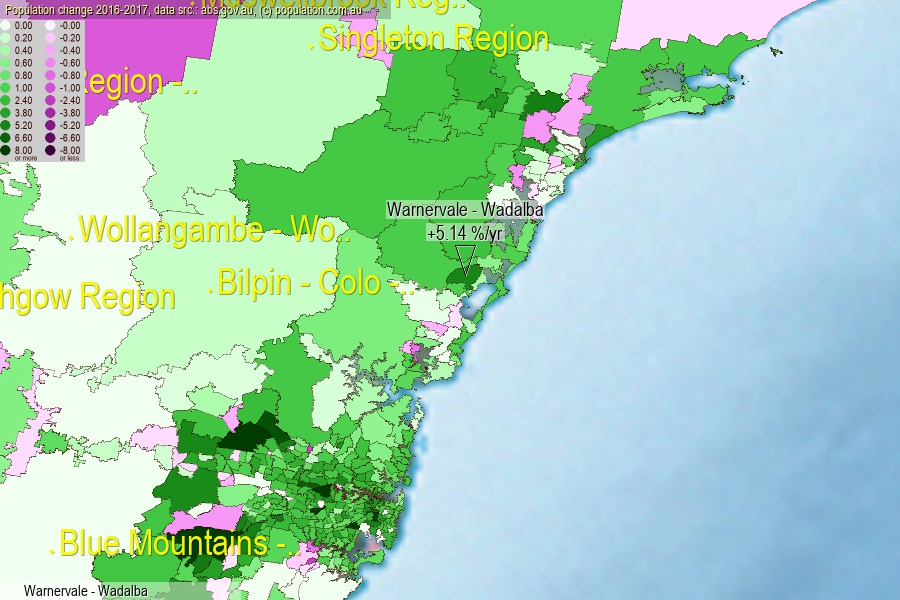 population.com.au
population.com.auLast official estimated population of Warnervale - Wadalba (as Statistical Area Level 2) was 16 440 people (on 2017-06-30)[2]. This was 0.07% of total Australian population and 0.207% of NSW population. Area of Warnervale - Wadalba is 42.90 km², in this year population density was 383.22 p/km² . If population growth rate would be same as in period 2016-2017 (+5.14%/yr), Warnervale - Wadalba population in 2025 would be 24 541. [0]



Click to enlarge. Warnervale - Wadalba is located in the center of the images.
Population [people], population density [p./km²] and population change [%/year] [2]
View borders » (new window) [4]
[1991-1992] +5.87 %/Yr.
[1992-1993] +2.15 %/Yr.
[1993-1994] +2.40 %/Yr.
[1994-1995] +1.62 %/Yr.
[1995-1996] +5.92 %/Yr.
[1996-1997] +10.51 %/Yr.
[1997-1998] +12.16 %/Yr.
[1998-1999] +16.61 %/Yr.
[1999-2000] +20.26 %/Yr.
[2000-2001] +15.47 %/Yr.
[2001-2002] +26.90 %/Yr.
[2002-2003] +25.73 %/Yr.
[2003-2004] +9.66 %/Yr.
[2004-2005] +9.80 %/Yr.
[2005-2006] +8.53 %/Yr.
[2006-2007] +9.82 %/Yr.
[2007-2008] +6.42 %/Yr.
[2008-2009] +5.33 %/Yr.
[2009-2010] +5.06 %/Yr.
[2010-2011] +4.82 %/Yr.
[2011-2012] +3.97 %/Yr.
[2012-2013] +3.63 %/Yr.
[2013-2014] +4.44 %/Yr.
[2014-2015] +4.27 %/Yr.
[2015-2016] +4.22 %/Yr.
[2016-2017] +5.14 %/Yr.
[0] Calculated with linear interpolation from officially estimated population
[1] Read more about SA2 and Australian Statistical Geography Standard (ASGS) on abs.gov.au
[2] Population data from Australian Bureau of Statistics (Population and density: 2017; change: 2016-2017)
[3] Digital Boundaries: Australian Statistical Geography Standard (ASGS) 2016.
[4] Border coordinates are simplifyed using Ramer-Douglas-Peucker algorithm.